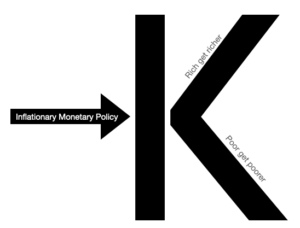If you talk to the average CPA, he’ll tell you that UBIT is the boogeyman and is to be avoided… always. Discussing this topic with an above average CPA (such as Eric Wikstrom of Integrated Wealth Strategies) yields different advice.
The Two Types of UBIT
- Triggered from a trade or business – if a tax exempt entity (such as an IRA or 401k) owns a trade or business, the income of that business is taxed at trust rates (i.e. very high tax rates). Both IRA & Solo 401k accounts are subject to this type of UBIT.
- Triggered from ownership of leveraged real estate – if a tax exempt entity (including IRA) owns real estate leveraged with a mortgage loan, the portion of that income attributable to the mortgage loan is taxed at trust rates. This type of UBIT is specifically referred to as UDFI – Unrelated Debt Financed Income. Solo 401k accounts & other qualified plans are exempt from UDFI.
Trust tax rates are very high, so it might make sense to avoid Type 1 UBIT at all costs. On the other hand, a close examination of UDFI tends to revoke its “boogeyman” status.
The reason UDFI isn’t a detrimental cost is that non-recourse mortgage loans (the only type an IRA/401k can legally obtain) are typically only offered at a 65% loan-to-value maximum. So this means that the UDFI tax is only payable on up to 65% of the property’s net income. (That’s right – net income. You do get to deduct depreciation and other expenses before paying UDFI tax).
Let’s examine a simple comparison of the taxes payable on net real estate income with 50% leverage:
Example A
| IRA | Individual | |
| Net Income | 10,000 | 10,000 |
| Tax Paid | 800 | 2,800 |
| Effective Tax Rate | 8.00% | 28.00% |
Example B
| IRA | Individual | |
| Net Income | 100,000 | 100,000 |
| Tax Paid | 16,229 | 28,000 |
| Effective Tax Rate | 16.23% | 28.00% |
The gap between the dollar amount of taxes paid widens as the income increases:
Let’s go back and look at Example B. Take the difference in taxes and examine the long term effects of 25 years of investing and compounding returns. These charts assume a 15% annualized ROI:
Example B1
This uses an effective tax rate of 16.23% for UDFI
Example B2
This uses an individual tax rate of 28%
The result? The IRA has a balance of $631,385.87 more than the individual does.
Conclusion
It might make sense to avoid Type 1 UBIT, while Type 2 UBIT (UDFI tax) results in less taxation than the alternative of investing with individual funds.






